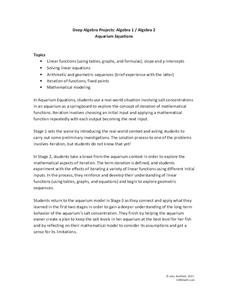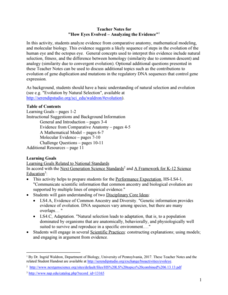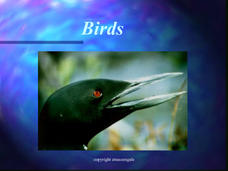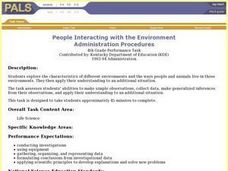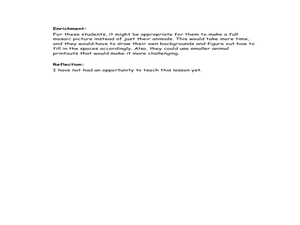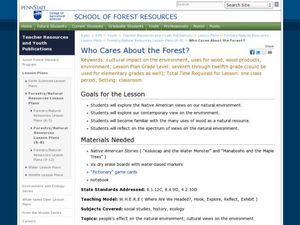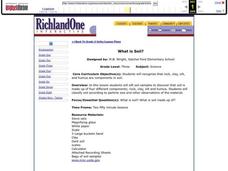5280 Math
Aquarium Equations
Take a look at linear functions in a new environment. A three-stage algebra project first asks learners to model the salt concentration of an aquarium using linear functions. Then, using iterations, pupils create a set of input-output...
NASA
Connecting Models and Critical Questions
Scholars use data to analyze and determine which sets of information need to be counted. They create a model to explain differences among chemical elements using graphs to prove concept mastery.
Serendip
How Eyes Evolved – Analyzing the Evidence
Octopodes existed for hundreds of thousands of years before humans, yet our eyes share many similarities. Scholars analyze the evidence to determine if the evolution of eyes best fits a homology or analogy model. They discuss the issue...
Biology Junction
Amphibians
Biologists know of more than 2,300 living species of amphibians. Learn more about the four orders of amphibians with an interesting presentation. It explains the similarities and differences between the thousands of species of...
Biology Junction
Birds
Birds adapted to almost every climate on the planet, from the Arctic to the rain forests. A presentation focused on birds covers their similarities and differences. It starts with their evolution from reptiles, their many physical...
Learning Games Lab
Nitrogen in Fertilizer
Nitrogen is an essential element for productive farming. An interactive lesson explores the chemical makeup of different fertilizers and their corresponding nitrogen content. The interactive challenges individuals to complete molecular...
Purdue University
Healthy Water, Happy Home
Clear water does not mean clean water. A collaborative lesson plan has groups play a board game to identify sources of water pollution and develop strategies for improving water quality. Their investigations include reference to the...
American Museum of Natural History
Ocean Creature Feature
From coloring to hard protective shells, ocean creatures have adaptation features that help them survive. An eight-question online quiz highlights different ocean animals and their unique characteristics. The resource then offers pop-up...
American Museum of Natural History
Theodore Roosevelt's Outdoor Adventures
Time for a virtual sightseeing trip. Pupils explore the Grand Canyon, Devil's Tower, and Yosemite Valley in an interactive online experience. They answer questions about the organisms in each location and draw conclusions based on their...
Workforce Solutions
Egg-streme Sports
Here's a new twist in the egg drop competition. Using only six inches of tape, four straws, and 2 pieces of newspaper, teams build a structure that keeps an egg from breaking when dropped. What's different about this project is that the...
Workforce Solutions
Workplace Ethics
An activity that focuses on workplace ethical dilemmas asks groups how to respond to a series of scenarios. First, the class brainstorms a list of ethics that apply to employers, then a second one that applies to employees. Using their...
Curated OER
People Interacting with the Environment
Students explore an arctic, temperate, and tropical environment and then decide what people need in each environment to help them live comfortably and what their lives would be like.
Curated OER
Art Lesson Synthesis
Students observe animals and complete an art project. In this interdisciplinary lesson, students define the word mosaic, create animal mosaics, and share their creations with the class. As students explain their art to the class they...
Curated OER
Plants and Animals
Students discuss the different types of plants and animals in a local environment. In this science lesson, students name some plants and animals understanding that they require different habitats to live. Students use computers to...
Curated OER
Who Cares About the Forest?
Students explore the natural environment and people's views, in particular the Native Americans. In this environment lesson students discover the many uses of wood as it pertains to our natural resources.
Curated OER
Plant And Animal Adaptations
Students examine plant and animal life while looking at the environments the organismisms live in. They determine how form follows function by looking an aquatic turtle and noticing its feature of adaptation features. They work in groups...
Curated OER
Trees Are More Than Wood
Students complete a worksheet. In this trees lesson, students discuss the different types of trees and complete an activity sheet relating to tree shape, survival and their environment.
Curated OER
What is Soil?
Third graders examine what makes soil by creating a Venn Diagram. In this Earth environment lesson, 3rd graders identify the different components that soil is made from. Students bring soil from their homes to examine and create a Venn...
Curated OER
Reuse and Respect!
Learners examine the concept of reusing trash to save the environment. In this environment lesson, students examine the definition of the word reuse, and apply it by finding ways to reuse trash in their school. They talk about what...
Curated OER
Our Friends the Trees
Students explore trees and learn about their importance to the environment. In this tree study lesson, students work in groups to complete a tree survey, a map for the survey, and several worksheets about the tree topics. students make a...
Curated OER
Selecting the Best Material to Use While Solving Technological Problems
Students examine natural resources and discuss their pros and cons. In this sustainable environment lesson, students describe reasons to use specific resources when faced with different problems, specifically why wood is a great...
Curated OER
Settling Down in a New Country
Young scholars explore environments by researching foreign countries. In this immigration lesson, students complete worksheets describing the many steps needed for an immigrant to become a citizen in a new country. Young scholars...
Curated OER
The Science Behind Dolphins
Students discover facts about marine mammals, specifically dolphins. In this K-2 lesson plan, students identify the different species of Cetaceans, focusing on dolphins. Students answer true/false questions regarding cetaceans and...
Curated OER
How Appropriate is that Tree?
Young scholars identify trees and their environments using a dichotomous chart. In this exploratory lesson students use the Internet to identify conditions needed for the trees and what the climate is in their area.


